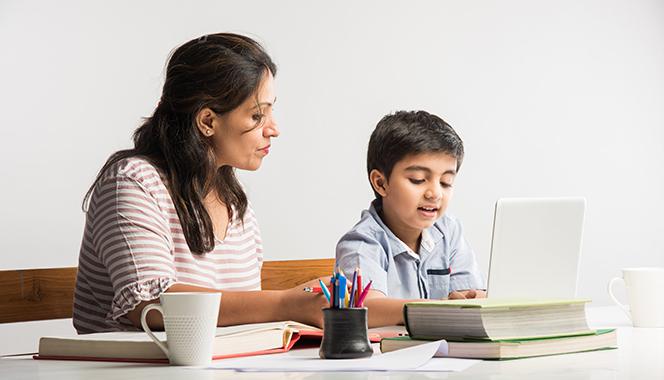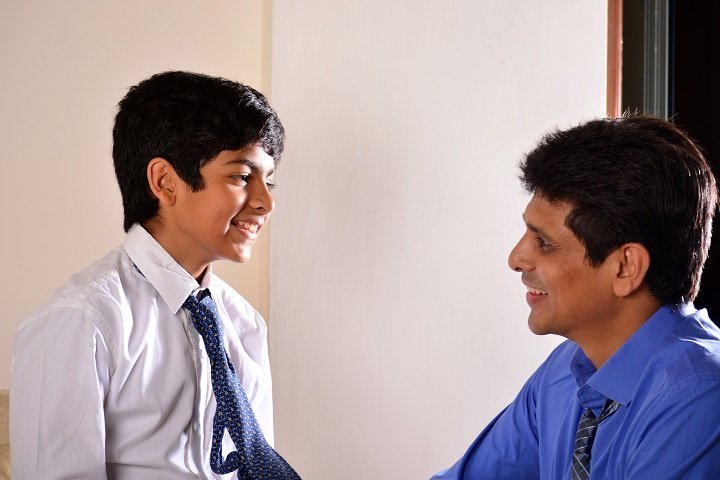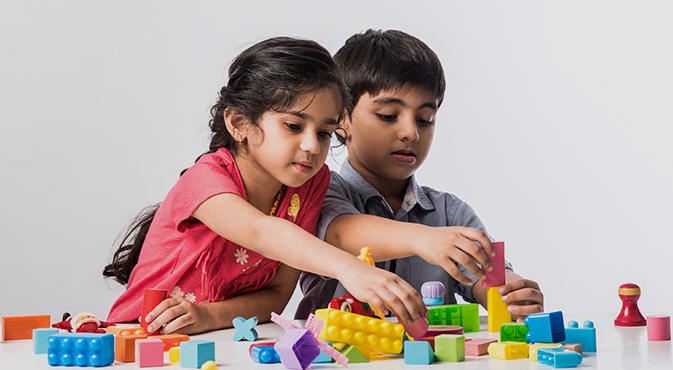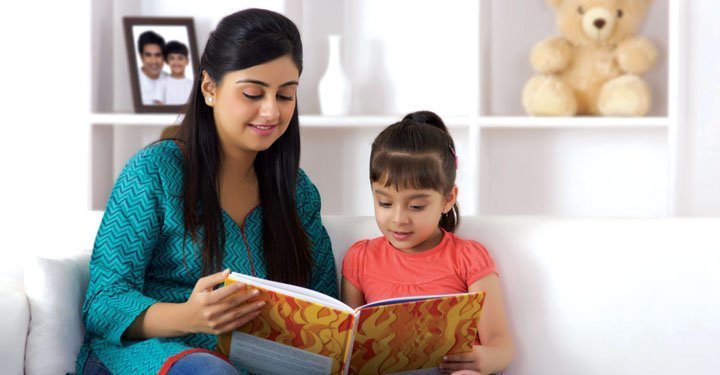Open your mind to Open Schooling: What You Should Know About This System Of Education
Open learning is an alternative education system available for your child. Here's all you need to know about the Open school system, the open school boards in India, and the schools of open learning.

Many students are opting to go off the beaten track for various reasons when it comes to education. Open school boards in India and schools of open learning offer the flexibility and freedom to learn at one's own pace. Homeschooled children who wish to take milestone examinations to gain admission into graduate or diploma programs, children who are pursuing professional sports or other careers, children with special needs, children who are unable to grapple with a second language, and those who opt-out of the rigors of the regular academic curricula, can all benefit from the open school system.
Open learning is highly customized and based on choice and needs. A high degree of involvement and guidance from parents is required without them overstepping the child's autonomy. Parents opting for open schooling for their children should be aware of their child's strengths, abilities, and interests.
There are currently two viable options to clear the regular school equivalent of the standard 10th and the 12th class exams in India if a child wishes to be a part of the open school system. These schools of open learning are the National Institute of Open Schooling (NIOS) and EDEXCEL.
National Institute of Open Schooling (NIOS)
The National Institute of Open Schooling (NIOS ) or (NOS for National Open School) is the Board of Education for open schools in India. One could also say that it's a school of open learning. This autonomous open school board in India was established by the Government in 1989. NIOS administers the secondary and senior secondary examinations of the open school system, which are equivalent to the CBSE and the CISCE exams.
As of 2016, about 19 lakh students from across the country are pursuing secondary (class 10), senior secondary (class 12), and vocational education programs under NIOS. It is one of the three open school boards in India, and the only Indian board looking after school education through open and distance education. It is on par with other national/state-level boards of school education.
Curriculum pattern for Board exams
NIOS follows a learner-centric approach of teaching, through the open school and distance education mode. The learners are free to choose subject combinations as per their needs and goals. They can study at their own pace from specially designed self-instructional materials. They have the freedom to take the subject exams one by one as per their preparation.
NIOS's open learning is supplemented by audio-video and face-to-face contact classes which are held at the study centers on holidays and weekends. The registration of the learners is valid for a period of five years. Students can change subjects or take up additional subjects during the admission period of five years, provided the total number of subjects does not exceed seven.
NIOS offers as many as 27 subjects (including English and 16 other languages) at the secondary and 23 subjects (including English and five other languages) at the senior secondary levels. A cafeteria approach in the choice of subjects is offered. No subject in this school of open learning is compulsory except one language, which can be English. Learners can also opt for vocational subjects along with academic subjects. NIOS conducts two public open learning examinations in an academic year - in April-May and in October-November. It recently introduced the On-Demand Examination System (ODES) under which learners can appear for the examination in any subject as and when they feel ready for it.
Open Basic Education for all ages
While NIOS is increasingly finding many takers at secondary and senior secondary levels, not many know that it offers an Open Basic Education (OBE) program, up to the equivalent of Class 8 in a regular school. This is done through the distance education mode.
This open learning program is largely targeted at children and adults in rural areas who do not have formal access to schools. NGOs and other bodies help out with some contact classes to help them with the open learning system.
Open Basic Education (OBE) program is available for:
- Children below 14 years of age
- Adults above 14 years of age
The OBE Programme is offered at three levels:
- OBE level A: equivalent to class I-III
- OBE level B: equivalent to class IV-V
- OBE level C: equivalent to class VI-VIII
For Homeschoolers
In urban areas, homeschooling is gaining popularity. Under homeschooling, parents have the freedom to let their children learn in any way, whatever they wish to learn. They do not have to appear for regular exams at the end of which they move on to the next grade or class.
For parents desirous of a more structured option under homeschooling, something that offers specific, streamlined lessons, the OBE program under NIOS is available.
Homeschooled under the NIOS syllabus or not, this open learning board offers all children the opportunity to appear for milestone examinations at the secondary and senior secondary levels, so that they have the necessary credentials to apply for undergraduate courses in India.
Eligibility for public exams
- Secondary: At least 14 years old
- Senior Secondary: There should be at least a two-year gap after clearing the secondary examinations
Students appearing for these open learning exams can self-learn or attend study centers. Here are the steps to follow for both choices:
Self-learners: apply online at www.nios.ac.in - download study material and tutor-marked assignments (TMAs) - self-study - textbooks and study center for contact classes will be intimidated - attend contact classes - complete lab work & records and TMAs - write exams.
Students attending learning centers (LC): apply online at www.nios.ac.in - scheduled classes at LC - remedial/special coaching and practical work - mock exams - submission of records and TMAs - write exams.
Prospects for college admission
Students aspiring for admission to the Arts and Sciences colleges should have taken the necessary subjects. Language exemption is allowed for deserving candidates. Dr. Susan John, professor of Psychology, at WCC College, says, "We assess NIOS students on a case-to-case basis. If we feel that the student has had a genuine need for open schooling, we admit her."
Admission to professional courses like Medicine, Engineering, and Law is also possible, provided the student has taken the necessary subjects and opted for a study center with lab facilities. Parents can visit the NIOS website for details. Preparation for the necessary entrance exams can be done through private academies. NIOS marks will be considered on par with CBSE class 12 exams.
EDEXCEL
The Open School system under NIOS is not the only option. Students can also choose to get schooled under EDEXCEL which allows the flexibility of open schooling.
One of the seven boards in the British Education system, EDEXCEL allows students from outside the United Kingdom to complete their 'A' levels (equivalent to class 12) school examination. Several study centers and schools in India allow students to prepare for the exams that are taken in April and September. There is no age bar to complete the 'O' levels (equivalent to class 10) and 'A' levels. This curriculum is perfect for students who want an accelerated study program and higher challenges in specific subjects.
Curriculum pattern
Nearly 40 diverse subjects are offered for credit at 'A' levels ranging from Accounting to the Swahili language. Of course, regular subjects like Language, Science, Math, and Social Sciences are also offered under this open learning system. A student may choose any combination of these subjects for credit. For instance, a student can choose Global Development and Physics if he wishes to. However, EDEXCEL centers in your neighborhood may have tutoring facilities for only some of these subjects, which means that you'd have to depend on other resources or self-study to work through these subjects available through open learning. The curriculum is quite intense and advanced with an application-oriented approach. Students who are well-prepared for and who clear these exams are better prepared for the global higher education environment.
Open schools in various states and cities
Karnataka
- JSS Karnataka Open School
- Karnataka Open School
- Karnataka Open Learning School
Hyderabad
- Vaishnavi College For Distance Education
- Big vision Educations
- Mentor Institute Of Distance Education
- A Students Academy
New Delhi
- Global Studies
- Global Group Of Institute
- Adhayayan Online Services
Prospects for college admission in the US and India
The completion of 'A' levels through the EDEXCEL curriculum is recognized by the Indian university system.
Every unit and qualification in this open learning curriculum framework will have a credit value (indicating the size of the units or qualification), and a level (which ranges from Entry level to Level 8), indicating the difficulty. A credit is a recognition that a course has been successfully completed. EDEXCEL centers offer to counsel on the credits that need to be achieved towards specific goals. Under EDEXCEL, one credit represents 10 hours of learning time.
One major requirement for acceptance into US colleges (irrespective of being a professional or non-professional course) is the completion of a prescribed number of credits in Science, Math, English, Language, and Social Studies in high school. This is an absolute prerequisite for entry into US colleges.
In India, an aspirant to Engineering or Medical courses should have accumulated 4 credits in 'A' levels. For entry into Engineering, the student must have completed one credit each in Math, Chemistry, and Physics. For Medical courses, an additional credit in Biology is required. In case of entry into non-professional undergraduate courses in India, at least 3 'A' level credits are required in the subjects specified under the admission eligibility criteria.
It is important to remember that the cut-off date for turning in the mark sheet for evaluation for entrance into the professional courses in India in May and June. However, the final exams for the 'A' levels end only in June and the marks are available as late as September. Technically, the student will then be eligible for entry to professional courses only the following summer.
Says Gowri Tirumurti, parent of an open-schooled student, "Some colleges do take a projected mark for the final score, but most colleges require the final 'A' levels mark sheet. A 9-month wait, is thus inevitable, before getting into a college in India."
Open schooling promotes the cause of learning and education
Open schooling is gaining popularity even among regular students. Regular schools continue to offer only limited, conventional combinations at the 12th class that is generally preferred by the majority. Schools offer these subjects on the grounds of viability. But today, undergrad options and career options are expanding beyond the purview of these limiting school subjects.
Often there is a mismatch between the student's interests and the subjects the regular schools offer at the board level exams. It may also happen that the child is unable to decide on her career early on. Under regular school, for instance, she does not have the luxury of taking Psychology, Math, and Economics in 12th. However, under an open school board, she can take up such a combination. She can then decide upon an apt career option relating to any of these subjects after the 12th Standard when she is more mature, and suitably select her undergraduate course. Colleges are also mandated to give admissions to children who are open-schooled, and biases are fast disappearing, this is improving the status of open schooling and open learning in India.
To conclude, open schooling has its advantages. Children become independent and good decision-makers. They are self-regulated and focus on the necessary learning, and are less stressed out. Yet, parents have to ensure that indiscipline does not creep in at any stage. Learning should not feel like an aimless exercise. While children can opt out of taking Math under open schooling, research says that ignoring Math can have adverse effects on brain development, not to mention that it definitely limits career options.
Elevate Your Child's Education: Embracing the Advantages of Homeschooling.
























Comments
Edit
Comment Flag
Cancel Update